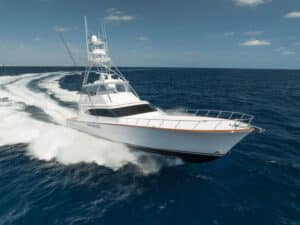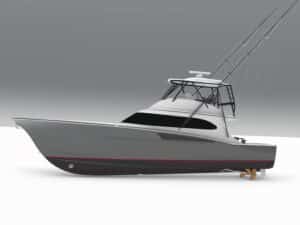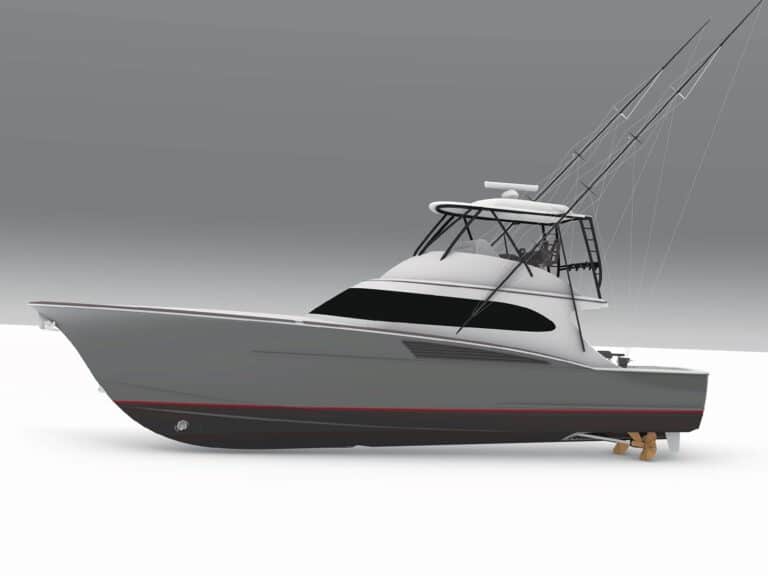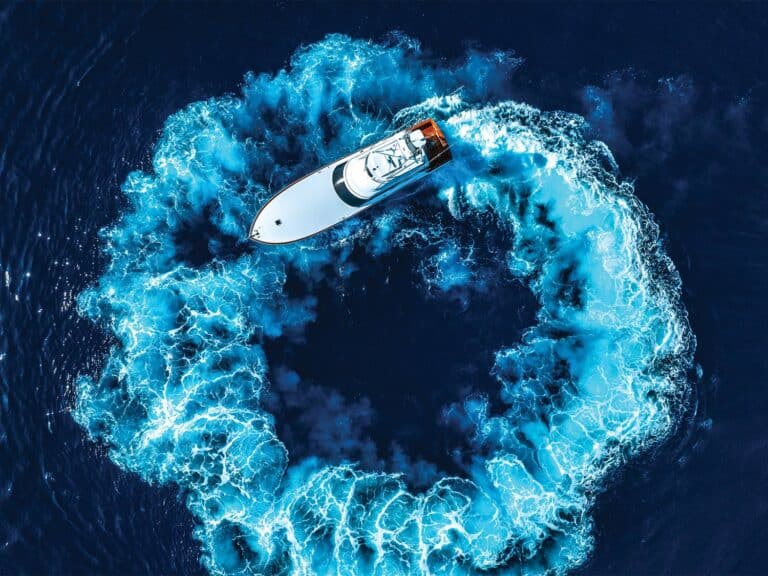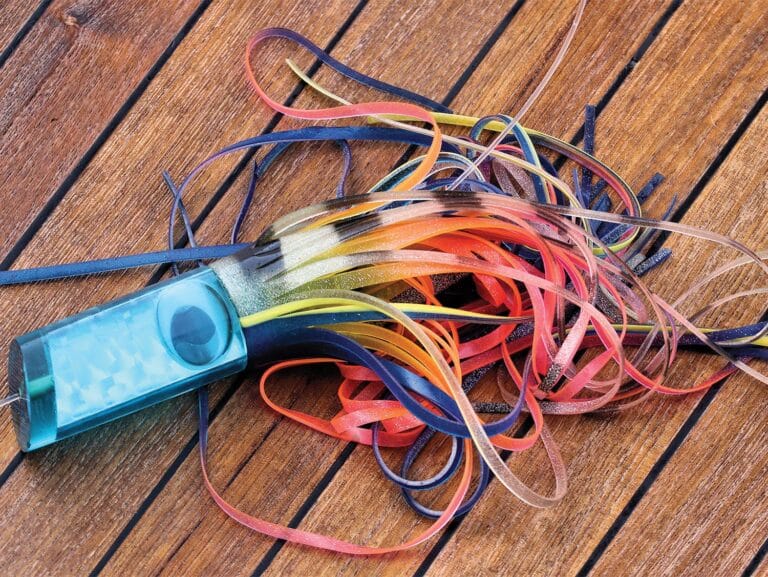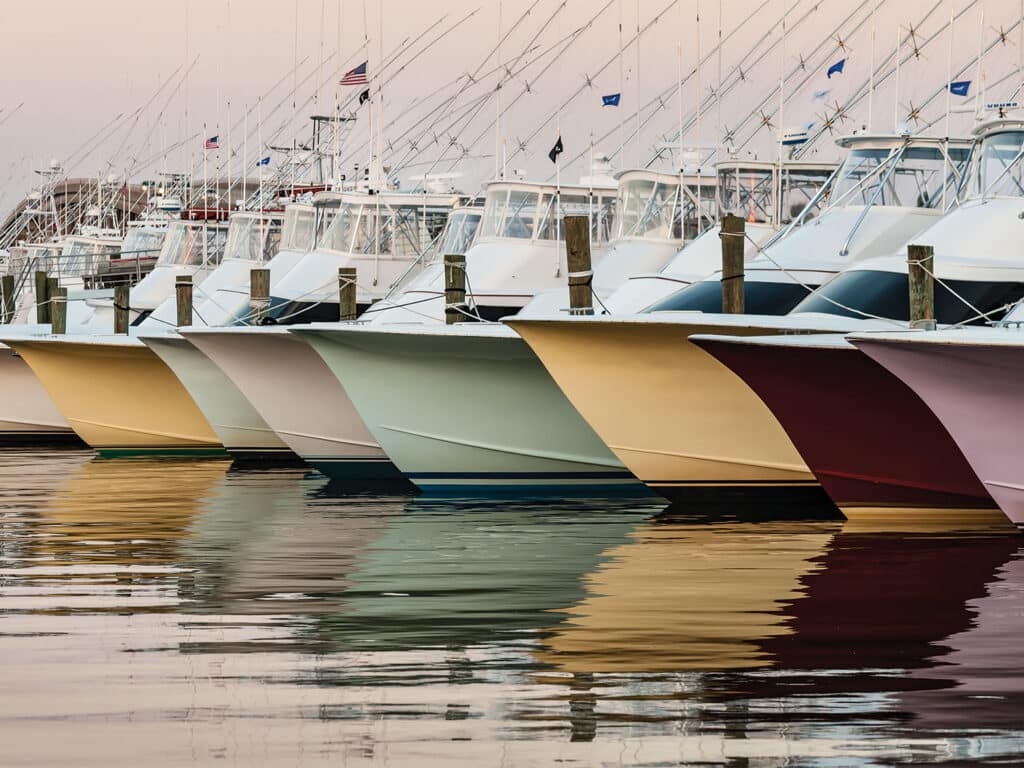
Special delivery: Sign up for the free Marlin email newsletter. Subscribe to Marlin magazine and get a year of highly collectible, keepsake editions – plus access to the digital edition and archives.
In the challenging world of marine operations, ensuring the longevity and efficiency of your vessels is paramount. Wind, salt, UV radiation, abrasion from fenders, microorganisms, and a guest or crew member with the wrong shoes all place your boat under a relentless attack of potentially damaging conditions. Paints and coatings offer the best and most effective way to protect your marine assets from the myriad of threats they face on a daily basis. But not all paints and coatings are the same. From engines, running gear, interiors and exteriors to the antifouling on the bottom, unique coatings exist for every area of your boat with specific attributes for each purpose and application.
Exterior
In today’s marine paint world, compounds such as epoxy, polyurethanes, alkyds and acrylics represent the new standard. These newer technologies are renewable, extremely durable and UV-resistant, and the chemistry of these new paints can be manipulated to meet almost any environmental condition while still providing limitless color options. When I first started in this business, everything was Matterhorn White. Today, the leading paint companies, such as Awlgrip, Alexseal and Axalta, can match almost any color you can imagine, from the color of the newest Lamborghini to that of a house you see in a magazine.
Brushing, rolling or spraying remain the primary methods for application; however, technology has come a long way in terms of the amount of exterior paint required to protect your vessel. Today’s coatings are only 2.5 mil dry-film thickness. To put the thickness into perspective, a piece of paper measures about 9 mils thick, and a human hair runs about 2 mils thick. That may sound insufficient to protect and give the elegant appearance that we want on our boats, but thanks to advancements in UV-protection technology, this thin coat of exterior paint will last more than five years with incredible color stability.
Interior
The paints and coatings used on the interior of the boat are very similar, if not identical, to those on the exterior. Protecting exotic wood species in the salon and the staterooms with a clear coating and adjusting the sheen of the interior, just as you would when selecting the finish of the walls inside your home, represent the major differences between the paints and coatings used on the interior of the vessel. Coatings can also be applied to fabrics, leather and carpet to protect them from dirt, mold and anything else we can throw at them. Whatever the preference, the leading paint manufacturers mentioned offer a variety of products featuring the latest in technology that provide protection and aesthetics to the interior of your vessel.
Engine Room
The engine room can be one of the toughest environments where the heat, fumes, moisture and constant maintenance take a toll on the paints and coatings. Axalta and Awlgrip offer products that can withstand about 240 degrees without any degradation or discoloration, and represent the most common selections. Most of the vessels I’ve worked on paint the engine room with the same coating as the exterior, with turbo chargers and heat exchangers being the exceptions. These areas require special coatings to maintain the colors in the high-temperature environment. Wencon makes a gelcoat-like coating in epoxy that can withstand 482 degrees, making it a great option for these areas.

Deck/Teak
While teak decks typically require only oil and elbow grease, their care and cleaning should be taken seriously from a safety standpoint. Most of the products used today contain harmful materials and require you to use thick gloves, rubber boots and a respirator. These cleaners and brighteners have been traditionally made from different types of acid, which can do a number on the paint. New products such as Eco 100 or 300 from Teak Decking Systems offer acid-free solutions, and they actually do work. I strongly suggest looking into these new products.
That said, there’s no arguing the timeless beauty of clear-coated teak. Transoms and bulkheads generally catch the eye first, and rightfully so, given the amount of time and cost required to create these works of art. Typically, these surfaces require several coats of traditional varnish, which are then block-sanded flat to bury the wood grain. Several coats of clear topcoat from manufacturers such as Axalta then provide the protective coating. Then the surface is usually buffed and polished to reveal the result you see.
Thanks to extraordinary price increases of teak and the considerable labor associated with having it on your boat, faux teak has emerged as a new alternative that has gained traction in recent years.
Bottom
Antifouling and running gear coatings don’t get the attention they deserve. A properly maintained and applied bottom paint can certainly help with a vessel’s speed and fuel efficiency, and other exciting options are emerging in this field. Some manufacturers, such as Jotun, have had proven results in saving large commercial and cruise ships considerable amounts of money with a new bottom coating technology that’s slowly making its way into the private sector. The problem with these coatings is they are designed for a boat or yacht that is moving almost constantly. As much as we want to say we use our boats all the time, we don’t. Prop and shaft coatings like PropSpeed are basically silicone; these coatings don’t repel the microorganisms like traditional bottom paint, but they severely limit their ability to form a strong foundation to attach to. So when running the vessel, the organisms fall off rather easily. As this technology advances, be on the lookout for it to become more available in the sport-fishing market.
Read Next: Behind the Scenes of Marine Boat Paint.
Looking Ahead
The main drivers behind the rapid evolution in technology of paints and coatings have been customer demands, application needs and government regulations. Boat owners and captains continually find ways to improve functionality and vessel aesthetics. Applicators need something that can be applied easily and efficiently. Axalta has even developed an additive that allows the paint to be applied in one pass around the boat while achieving the recommended film paint thickness. This greatly reduces the exposure for the painters and allows the project to be completed more quickly and safely. Xpel has also emerged with a new product that provides a protective, transparent wrap that can be applied to various areas on your vessel to further protect from harsh elements. Finally, government agencies continue to regulate the use of volatile organic compounds (VOCs), which pose a threat to both humans and the environment. Not too long ago, paints used to contain arsenic, lead and tributyl tin, just to name a few.
All of these factors continually force the paint manufacturers to evolve and explore new technology in the world of paints and coatings. So the next time you look across a marina and see the sport-fishing boats and yachts all lined up and looking great, you can thank that thin layer of chemistry for making it possible.
